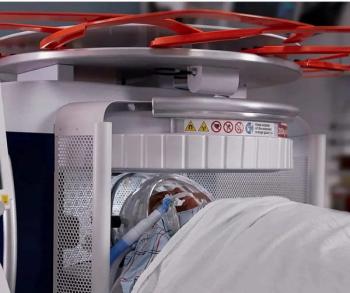For women with suspicious calcifications on mammograms, new research suggests that dynamic contrast enhanced MRI (DCE-MRI) may provide up to a 30 percent higher detection of invasive breast cancer or high-grade ductal carcinoma in situ (DCIS). The authors of the study also found that diffusion-weighted imaging (DWI) and quantitative MRI features may not offer additional diagnostic benefit in this patient population.
For the prospective study, recently published in the European Journal of Radiology, researchers reviewed mammography and pre-biopsy 3T MRI data for 81 women (mean age of 55) who had a total of 86 calcifications on mammograms. The study authors noted that 29 percent of the calcifications were malignant.
The researchers found that models that incorporated qualitative DCE-MRI offered a 71 to 76 percent area under the curve (AUC) for malignancy detection in contrast to 57 percent for a model that combined mammography findings and clinical variables. Models that included DCE-MRI also provided an AUC range of 78 to 91 percent for invasive breast cancer or high-grade DCIS in comparison to 61 percent for the combination of mammography and clinical findings, according to the study authors.
However, other models incorporating DWI or quantitative MRI features offered lower AUC ranges for malignancy detection (71 to 75 percent) and detection of invasive or high-grade DCIS (78 to 90 percent) in comparison to models utilizing DCE-MRI.
“While lesion visibility on DWI and quantitative MRI features derived from high-temporal resolution acquisition were associated with both malignancy and invasive/high-grade DCIS, these features did not show clear added value over standard qualitative DCE MRI for differentiating suspicious calcifications,” wrote lead study author Vivian Y. Park, M.D., who is affiliated with the Department of Radiology at the University of Washington in Seattle, and colleagues.
Three Key Takeaways
- Superior diagnostic performance with DCE-MRI. Dynamic contrast-enhanced MRI demonstrated up to a 30 percent higher detection rate for invasive breast cancer or high-grade DCIS in women with suspicious mammographic calcifications compared to a combination of mammography and clinical variables.
- Limited added value from DWI or quantitative MRI. Diffusion-weighted imaging and quantitative MRI features did not provide significant diagnostic improvement beyond standard qualitative DCE-MRI in differentiating malignant from benign calcifications.
- Potential to reduce unnecessary biopsies. In patients with BI-RADS 4A/4B calcifications, use of standard DCE-MRI could have avoided approximately 70–75% of unnecessary biopsies, particularly in cases of non-enhancing calcifications when invasive or high-grade DCIS was absent.
For patients with mammographic BI-RADS 4A and 4B calcifications, the researchers noted significantly reduced malignancy rates for non-enhancing calcifications and an absence of invasive cancer or high-grade DCIS detection in these cases. They also noted that three missed malignancies in this subgroup had intermediate-grade DCIS.
“ … Standard DCE-MRI could have reduced the number of planned biopsies in mammographic BI-RADS category 4a/4b calcifications by 77.8 percent (49/63) in our study cohort or reduced the total number of unnecessary biopsies by 73.0 percent (46/63) when accounting for MRI-prompted additional benign biopsies,” maintained Park and colleagues.
(Editor’s note: For related content, see “What New Research Reveals About Preoperative Breast MRI,” “Post-NAC Breast MRI Without Calcifications Associated with 65 Percent Higher Likelihood of Pathologic Complete Response” and “The Reading Room Podcast: Current and Emerging Insights on Abbreviated Breast MRI, Part 2.”)
In regard to study limitations, the authors acknowledged that small sample size prevented analysis of individual mammography features and thwarted assessment of MRI for detecting cases of low-grade DCIS alone. The researchers also conceded relatively low numbers of visible lesions on DWI MRI and DCE MRI.





























